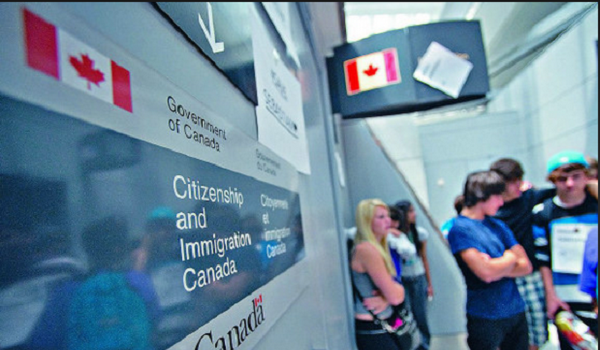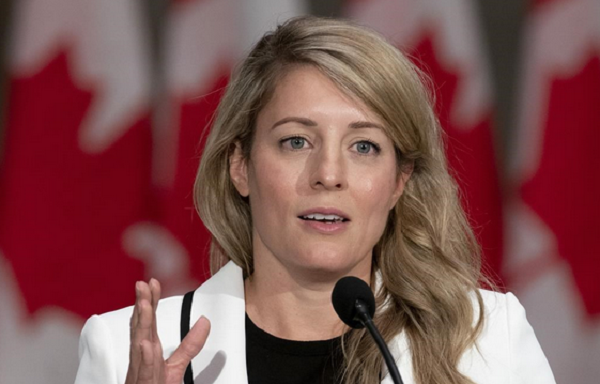Feds immigration survey seeks Canadians’ opinion on how many permanent residents Canada should take
Amid a tidal change in public opinion toward immigration, the federal government is seeking Canadians’ help in shaping its coming plan for how many newcomers should be welcomed to the country.
The Immigration Department’s annual online consultation has been a yawn in the recent past, but this year’s survey is expected to draw a lot of eyeballs because of the rapid population growth that’s been blamed for Canada’s housing crisis and straining public resources.
For the first time, officials are including in the plan the targets for temporary residents, whose population has soared from 1.4 million two years ago to today’s 2.5 million: About 42 per cent of them are here on study permits, 53 per cent on work permits and five per cent as asylum seekers.
“These surveys and consultations are more important than ever before because the context this time around is very different than it was even from last year,” said Lou Janssen Dangzalan, vice-president of policy at the Canadian Immigration Lawyers Association.
“They used to be such a mundane topic but now it’s become a hot-button issue, because it takes on a new dimension with temporary residents and then the economic hardship in Canada. What does that mean?”
Twelve months ago, then Immigration Minister Sean Fraser was still talking about the significant role of immigration in addressing labour shortages, the aging population and the worker-to-retiree ratio. Earlier this year, the tide quickly shifted as his successor Marc Miller began reining in the numbers of study-permit and work-permit holders welcomed to the country.
“We felt that we were immune to anti-immigrant sentiment that was being espoused in the likes of the United States and the United Kingdom and other western democracies,” said Kareem El-Assal, founder of section95.com, a blog that provides analyses of Canada’s immigration system. “And finally, it’s arrived here.
“We are at an inflection point where we’re asking ourselves now, ‘Should we go back to the drawing board and seriously consider whether very high levels of immigration make sense?’ ”
Canada’s current 2023-2025 immigration levels plan proposes to increase the number of permanent residents Canada welcomes annually to 485,000 in 2024, 500,000 in 2025 and 500,000 in 2026. The survey seeks input to decide if the next two years’ intake should be adjusted, and to inform new targets for 2027.The 2023 target was 465,000.
“We’re seeking your views on the balance among different categories and programs, and how immigration can best support Canada from multiple perspectives,” said the introduction of the survey, which targets governments, organizations and interest groups.
The two-month online consultation, open until June 30, contains 27 questions and asks respondents, among many things:
•To rank the objectives of the immigration system: whether those are to address economic needs, reunite families, increase population, uphold humanitarian commitments, sustain regional communities or enrich diversity;
•If the 2026 target of 500,000 permanent residents, or 1.25 per cent of the population, is appropriate;
•If spots should be prioritized for economic, family or humanitarian classes;
•To identify the top investments required to bring in more immigrants to their local community, ranging from public transit to housing, schools, health-care services and internet access.
Migration policy analyst Anne Michèle Meggs was surprised the survey only has one direct question about the level of temporary residents, who have been the focal point of the recent debates; it asks if keeping temporary residents at five per cent of Canada’s overall population is too high, too low or about right.
She said the questionnaire only gauges public opinions and does not inform the immigration levels in any scientific way.
“It doesn’t get down to the nitty gritty of what the actual issues are right now with regards to the immigration system,” said Meggs, a retired director of planning and accountability with the Quebec Ministry of Immigration. “It’s avoiding the real question. The real question is about temporary immigration.”
She said the root cause of the runaway temporary resident population is Canada’s shift to a two-step immigration system, which favours the selection of temporary migrants with Canadian education credentials and work experience and transitions them for permanent residence.
“We suggest to people that are coming in with a temporary permit that they will be able to stay but we haven’t adjusted necessarily our permanent programs in order for that to happen,” said Meggs.
The result is, she noted, is a growing rank of temporary residents in the country that remains here in limbo and keeps growing without access to permanent status.
Dangzalan said Miller’s biggest challenge is how to balance the sometimes conflicting interests and priorities of employers, post-secondary education sector, advocates, migrants and local communities. He said Ottawa needs to return to the objectives of the immigration system, and any programs that don’t deliver must go.
“It’s not easy,” he said. “But it’s a conversation that is needed, sorely.”
Both Meggs and Dangzalan said it’s time for a Royal Commission to study what the country wants from its immigration system in a non-partisan manner, independent from politicians and civil servants. They said the objectives of international education and foreign worker programs should be part of the review.
The next immigration levels plan will be released in the fall.
This article was first reported by CTV News
This article was first reported by The Star












